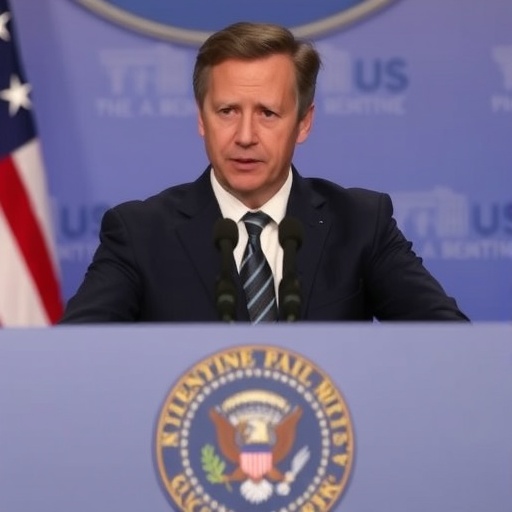In a bold escalation of diplomatic pressure, Ukrainian President Volodymyr Zelensky has urgently called on the Biden administration to expand US sanctions from just two Russian oil companies to the entire Russian oil sector, aiming to starve Russia’s war machine of vital revenue streams fueling the ongoing Ukraine war.
- Zelensky’s Urgent Appeal Highlights Vulnerabilities in Current US Sanctions
- Tracing the Evolution of US Sanctions on Russian Oil Post-Invasion
- Economic Ripple Effects: How Broader Sanctions Could Reshape Russian Oil Dynamics
- Ukraine War Frontlines: Oil Revenues as the Lifeblood of Russian Aggression
- Prospects for Action: Biden Administration’s Response and Global Coordination
This plea comes at a critical juncture, as Russian forces continue their relentless advances in eastern Ukraine, with Zelensky emphasizing that targeted sanctions alone are insufficient to curb Moscow’s aggression. Speaking during a virtual address to U.S. policymakers on Wednesday, Zelensky stated, “The blood of Ukrainian civilians is on the hands of those profiting from Russian oil. It’s time for the United States to hit where it hurts—Russia’s economic lifeline.” The request underscores the deepening frustration in Kyiv over the pace of Western support, as the Ukraine war enters its third year with no end in sight.
Zelensky’s Urgent Appeal Highlights Vulnerabilities in Current US Sanctions
President Zelensky’s call for broader US sanctions on Russian oil represents a strategic pivot in Ukraine’s advocacy efforts. Currently, the Biden administration’s measures primarily target entities like Rosneft and Gazprom Neft, two of Russia’s largest oil producers. However, Zelensky argues that this narrow focus allows the majority of Russia’s oil exports—valued at over $100 billion annually—to flow unabated to global markets, particularly in Asia and Europe.
During his address, Zelensky detailed the human cost of this oversight. “Every barrel of Russian oil sold funds drones, missiles, and tanks that devastate our cities,” he said, referencing recent strikes on Kharkiv that killed dozens. Data from the International Energy Agency (IEA) supports this claim: Russia exported approximately 7.5 million barrels per day in 2023, generating revenues that constitute about 40% of its federal budget. Without comprehensive US sanctions, Zelensky warns, these funds will prolong the Ukraine war indefinitely.
The Ukrainian leader’s push is not isolated. It builds on previous appeals, including a letter sent to President Joe Biden last month, where Zelensky urged for secondary sanctions on third-party buyers of Russian oil. This would penalize countries like India and China, which have increased purchases since the invasion began in February 2022. Experts note that such measures could reduce Russia’s oil income by up to 30%, according to a recent Brookings Institution report.
Tracing the Evolution of US Sanctions on Russian Oil Post-Invasion
The Biden administration’s initial response to Russia’s full-scale invasion of Ukraine was swift but measured. In March 2022, the U.S. banned direct imports of Russian oil, crude, and other energy products, a move that echoed similar actions by the European Union. This was followed by sanctions on specific vessels in Russia’s “shadow fleet,” a network of tankers evading Western restrictions.
By mid-2023, the focus sharpened on two key players: Rosneft, Russia’s largest oil producer, and its subsidiary. The U.S. Treasury Department froze Rosneft’s assets and prohibited American firms from dealing with it, citing its role in funding the Ukraine war. Gazprom Neft faced similar scrutiny, with sanctions disrupting its refining operations. Yet, as Zelensky points out, these actions cover only a fraction of the sector. Russia’s overall oil production has dipped by just 10% since the war began, per OPEC estimates, allowing President Vladimir Putin to sustain military expenditures exceeding $100 billion yearly.
Historical context reveals the challenges. During the Cold War, oil embargoes were attempted against the Soviet Union but often backfired due to global dependencies. Today, with Russia as the world’s third-largest oil producer, the Biden administration treads carefully to avoid spiking global energy prices. Inflation concerns in the U.S., where gas prices averaged $3.50 per gallon in 2024, have tempered aggressive moves. Nonetheless, Zelensky’s advocacy has gained traction; a bipartisan group of U.S. senators introduced legislation last week to authorize broader sanctions, signaling potential momentum.
To illustrate the sector’s resilience, consider this timeline of key US sanctions milestones:
- March 2022: Ban on Russian oil imports, impacting 600,000 barrels per day headed to the U.S.
- June 2022: Price cap on Russian oil at $60 per barrel, enforced via G7 coordination.
- January 2023: Sanctions on Sovcomflot, Russia’s state shipping company, seizing over 100 tankers.
- November 2023: Targeting of Rosneft and 18 oil tankers in its fleet.
Despite these steps, Russia’s pivot to discounted sales in non-Western markets has mitigated the blow, with exports to China surging 25% year-over-year.
Economic Ripple Effects: How Broader Sanctions Could Reshape Russian Oil Dynamics
Expanding US sanctions to the entire Russian oil sector could deliver a seismic shock to Moscow’s economy, potentially accelerating an end to the Ukraine war. Analysts from the Center for Strategic and International Studies (CSIS) project that a full embargo, combined with EU efforts, might slash Russia’s GDP by 5-7% in the first year. This would compound existing pressures: inflation in Russia hit 8.5% in 2024, and the ruble has depreciated 20% against the dollar since sanctions intensified.
Key to this strategy is targeting Russia’s Urals crude blend, which trades at a $15-20 discount below Brent due to sanctions. Zelensky’s proposal includes banning U.S. technology and services to all Russian oil firms, crippling upstream production. “Russia relies on Western drilling tech; without it, their fields will decline faster,” noted energy expert Dr. Elena Petrova in a recent interview. Statistics bear this out: Russia’s oil output could fall by 500,000 barrels per day within months of comprehensive sanctions, per IEA forecasts.
However, the Biden administration faces domestic hurdles. Oil prices have fluctuated wildly since the Ukraine war erupted, peaking at $120 per barrel in 2022 before stabilizing. A broader sanction regime risks renewed volatility, potentially adding 20-30 cents per gallon to U.S. pump prices. Congressional Republicans, led by figures like Senator Ted Cruz, have criticized the administration for not going far enough, while Democrats worry about alienating allies dependent on affordable energy.
Globally, the impact extends beyond Russia. India’s refineries, processing 1.5 million barrels of Russian oil daily, could face supply disruptions, prompting diversification to Middle Eastern sources. China, absorbing 40% of Russia’s seaborne oil exports, might retaliate with trade barriers, complicating U.S.-China relations. Yet, proponents argue the moral imperative outweighs these risks, especially as Ukraine reports over 500 civilian deaths from Russian strikes in the past quarter alone.
Ukraine War Frontlines: Oil Revenues as the Lifeblood of Russian Aggression
The Ukraine war’s brutality is inextricably linked to Russia’s oil wealth. Since February 2022, Moscow has launched more than 10,000 missile and drone attacks, many powered by revenues from the oil sector. Zelensky’s address painted a vivid picture: in Donetsk and Luhansk, Russian forces have captured key territories, displacing 6 million Ukrainians and destroying infrastructure worth $150 billion.
Oil funds have enabled Putin to rebuild his military, procuring components from Iran and North Korea despite sanctions. A United Nations report estimates that 60% of Russia’s defense budget—totaling $84 billion in 2023—stems from energy exports. Zelensky highlighted specific atrocities, such as the bombing of a Mariupol maternity hospital, funded indirectly by oil sales that evaded U.S. restrictions.
Ukrainian officials have shared intelligence with the Biden administration showing how Rosneft and other firms launder revenues through shell companies in Cyprus and Dubai. Expanding US sanctions could close these loopholes, with Treasury tools like the Specially Designated Nationals list targeting enablers. “This isn’t just economic policy; it’s a weapon against genocide,” Zelensky asserted, invoking the International Criminal Court’s arrest warrant for Putin.
On the ground, Ukrainian resilience shines through. Despite oil-fueled Russian offensives, Kyiv’s forces have reclaimed 50% of occupied territories using Western aid. Yet, Zelensky warns that without escalated US sanctions on Russian oil, winter campaigns could overwhelm defenses, leading to further humanitarian crises. Aid organizations report 10 million Ukrainians facing food insecurity, exacerbated by disrupted Black Sea grain exports amid the war.
Comparative analysis with past conflicts underscores the stakes. The 1990s sanctions on Iraq’s oil halved Saddam Hussein’s revenues, hastening his regime’s isolation. Similarly, broad measures against Russian oil could isolate Putin diplomatically, pressuring him at the negotiating table.
Prospects for Action: Biden Administration’s Response and Global Coordination
As Zelensky’s plea reverberates through Washington, the Biden administration is under mounting pressure to act decisively on US sanctions against Russian oil. White House Press Secretary Karine Jean-Pierre indicated that the request is “under active review,” hinting at possible announcements before the G7 summit in June 2024. Internal deliberations involve the National Security Council and Treasury, weighing economic fallout against strategic gains in the Ukraine war.
International allies are key to success. The EU has already phased out 90% of Russian oil imports, but loopholes persist via pipelines like Druzhba. Zelensky has lobbied for synchronized action, proposing a “global oil coalition” to enforce a unified price cap. Britain’s recent sanctions on 100 Russian tankers set a precedent, and Japan—another major importer—has signaled willingness to join expanded efforts.
Looking ahead, implementation could unfold in phases: first, designating the entire sector as sanctioned; second, pursuing secondary penalties on buyers; third, enhancing enforcement with naval patrols in the Baltic and Black Seas. Success metrics include a 20% drop in Russian oil revenues by year’s end, potentially forcing budget cuts to military spending and easing pressure on Ukrainian frontlines.
Challenges remain, including Russia’s countermeasures like stockpiling oil and developing domestic tech. Yet, with U.S. midterm elections looming, political will may align for bolder steps. Zelensky concluded his address optimistically: “Together, we can turn Russia’s black gold into its undoing, bringing peace closer for Ukraine and the world.” As negotiations intensify, the coming weeks will test the Biden administration’s resolve in curbing the Ukraine war through economic leverage.









